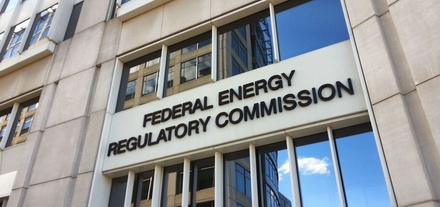
On Monday, FERC issued its long-awaited final order on the grid resilience docket. In a clear repudiation of Secretary Perry, who issued the original Notice of Proposed Rulemaking, FERC closed the docket on the DOE NOPR, opting to not take any action. The Secretary, along with major coal companies, stated the belief that there was an urgent need to take out-of-market action in order to preserve baseload generation resources such as coal and nuclear plants capable of maintaining 90 days of fuel onsite. However, FERC determined there was no emergency, and terminated consideration of the cost-of-service proposal in a unanimous vote. Three of the five commissioners (LaFleur, Glick, and Chatterjee) wrote individual but concurring opinions supporting this action, although Commissioner Chatterjee continued to express “concerns regarding bulk power system resilience in the interim period.” FERC also initiated a new proceeding to examine (and indeed, for the first time, define) resilience from the ground up, calling for information from the regional grid operators. But even in launching that examination, FERC commissioners made no promises about taking action to change market operations, pledging only to “evaluate whether additional Commission action regarding resilience is appropriate at this time.”
Reaction across the energy industry, apart from coal and nuclear interests that stood to gain from the DOE proposal, was enthusiastic. The broad industry coalition (including AEE) that has been battling the proposal for months issued a statement saying it was “encouraged” by FERC ‘s ruling and that it would “look forward to engaging with FERC, DOE, and grid operators in an examination of what resilience of the electric power system means and requires, and to demonstrating the contribution of our industries to ensuring reliable power for all.” AEE also issued its own statement, with SVP Malcolm Woolf commending FERC for “rejecting an unwarranted bailout of uneconomic power plants in order to solve a problem that doesn’t exist.”
FERC’s order found that there was no substantive information in the record to support the DOE proposal; in fact, in the order, FERC called the proposed rule a “multi-billion dollar bailout targeted at coal and nuclear generating facilities,” citing the Brattle Group report attached to the joint industry comments submitted by AEE along with groups such as EPSA, SEIA, INGAA, API, ESA, and AWEA. FERC instead concurred with many commenters that the threat to resilience lies primarily with transmission and distribution systems, rather than on generation fuel supply issues.
So what’s next? FERC wants to examine the issue of resilience in greater depth. In a new docket (AD18-7-000) opened on Monday, FERC requested information from the regional grid operators about resilience, including its definition – something many commenters pointed out was unclear in the DOE NOPR. FERC suggests the following:
“The ability to withstand and reduce the magnitude and/or duration of disruptive events, which includes the capability to anticipate, absorb, adapt to, and/or rapidly recover from such an event.”
FERC is also seeking input from RTOs on how each organization currently evaluates resilience and how it mitigates resilience concerns. The grid operators will have 60 days to submit comments, and then the public has 30 days to provide reply comments. What is notable about the questions FERC posed to the grid operators is that they are all specific, technical queries into the day-to-day operations of the RTOs – a stark contrast to the broad, politically driven narrative set forth by DOE to justify its proposal. AEE was particularly happy to see FERC adopt our recommendation that “any process initiated by the Commission to further explore this topic should include a holistic analysis of all of the potential threats to grid resilience,” as the FERC decision called the purpose of its new proceeding to “examine holistically the resilience of the bulk power system.”
Meanwhile, Secretary Perry has pivoted to state that, “As intended, my proposal initiated a national debate on the resiliency of our electric system.” Although Congress could act to bail out uneconomic coal plants that would otherwise close, major legislative action at the federal level seems unlikely. (For his part, Murray Energy CEO Robert Murray told Politico that he hoped Perry would invoke DOE’s emergency powers to keep coal-fired power plants open until the FERC investigation was completed – a request for exercise of the department’s Section 202(c) powers Murray had made before, but DOE rejected.)
AEE looks forward to engaging with FERC and the regional grid operators in a robust discussion about resilience and how advanced energy technologies can contribute – and are already contributing, as they did in the recent severe winter weather in the Northeast. As we noted in our background paper on the DOE NOPR, Bailout Without Benefit, demand response and energy efficiency are already reducing peak demand, thus lowering necessary reserve capacity and improving resource adequacy. Other technologies such as advanced metering infrastructure (AMI) can improve system restoration by providing grid operators with improved situation awareness and more accurate outage location information.
We hope that FERC will take this opportunity to consider the resilience benefits that these technologies provide and direct grid operators to price advanced energy accordingly. For example, the Commission could look at how ancillary services are procured and paid for, since many needed grid services (primary frequency response, fast frequency response, dynamic voltage, black start capability, ramp rate flexibility, etc.) are not currently monetized in the wholesale markets; advanced energy technologies are essentially providing them for free. The forthcoming docket gives FERC and the RTOs a chance to properly compensate all technologies based on the benefits they bring to the grid – not an arbitrary out-of-market solution like the one proposed by DOE – and rejected by FERC.
